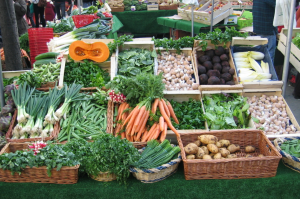
How Food Fortification Could Improve Children’s Health
Every year, millions of children in India face preventable blindness, weak bones, and even early death—not because medicine doesn’t exist, but because key vitamins are missing from their diets. A new study suggests that a surprisingly simple change, fortifying everyday oil and milk, could save over a million healthy years of life.
The Everyday Problem
If you’ve ever cooked a meal with oil or poured a glass of milk, you probably didn’t think about vitamins. But in much of the world, these foods are the perfect vehicles to deliver life-saving nutrients.
Vitamin A keeps vision sharp and the immune system strong. Vitamin D helps bones grow and muscles function. Yet in India alone, surveys show that nearly one in five schoolchildren is deficient. That means higher risks of night blindness, rickets, and dangerous infections. Pregnant women, too, face greater risks of anemia and complications.
So here’s the puzzle: India already has a Vitamin A supplementation program. Children are supposed to get high-dose drops every six months. But national data shows only about one-third of toddlers actually receive them. Coverage gaps, missed appointments, and limited outreach leave millions unprotected.
But here’s where it gets interesting…
A New Strategy on the Table
Instead of relying only on supplements, what if vitamins were built right into foods nearly everyone consumes?
That’s the thinking behind fortifying edible oil and milk. When researchers modeled this approach, they discovered something striking: fortification could deliver wider coverage, better health outcomes, and do it at a fraction of the cost.
Think of it like adding fluoride to tap water: a simple, invisible change with massive public health benefits.
The Research Behind the Numbers
The study, led by a team of Indian scientists and published in PLOS ONE in September 2025, calculated the “health years” lost due to vitamin deficiencies. Scientists use a measure called DALYs (disability-adjusted life years), which combines years cut short by death with years lived in poor health.
Here’s what they found:
- Vitamin A programs could avert over 1.1 million years of life lost if coverage were strong.
- Vitamin D fortification could prevent nearly 100,000 years of disability, especially from weak bones in children and fractures among the elderly.
- The cost? About $26 million USD for supplementation versus just $17 million USD to fortify oil and milk on a national scale.
Put differently: fortification delivers more impact for less money.
But there’s a twist…
The Human Angle
Imagine two families in different parts of India.
In a rural village in Bihar, a mother lines up at a health center to receive Vitamin A drops for her toddler. But the clinic ran out of stock last month. She goes home empty-handed.
Meanwhile, in a city like Bengaluru, another mother buys a packet of fortified cooking oil from her neighborhood shop. She doesn’t think twice about it. But every time she prepares dal or curry, her child quietly receives nutrients that strengthen immunity and prevent blindness.
This contrast captures the power of fortification. It reaches people without depending on clinics, appointments, or outreach campaigns.
Why It Matters Beyond India
This isn’t just an Indian story. Vitamin A and D deficiencies remain global problems, from sub-Saharan Africa to Southeast Asia. Countries like Nigeria, Bangladesh, and Brazil face similar challenges: programs exist, but coverage is patchy.
Fortification offers a model other nations can adapt, especially where cooking oil and milk are staples. In fact, history shows this approach works. In the 1950s, India tried fortifying Vanaspati (a type of cooking fat). Today, many nations fortify salt with iodine, cutting goiter rates dramatically.
So the question is whether governments, producers, and communities will embrace it.
What Could Change Next
The researchers highlight a few key points:
- Fortification is not a silver bullet. Families still need diverse diets with fruits, vegetables, and protein.
- Equity matters. Rural and low-income families must have affordable access to fortified foods.
- Monitoring is essential. Small oil producers, street milk vendors, and informal markets must be included, or the most vulnerable will remain unprotected.
But the overall message is clear: fortifying oil and milk is one of the cheapest, simplest ways to protect millions from hidden hunger.
And here’s where it gets exciting…
The Bigger Picture
Deficiency diseases are often invisible. A child struggling to see at night, a teenager with weak bones, or an elderly person prone to falls may never be counted in official statistics. Yet the economic burden is enormous: lost schooling, hospital costs, and reduced productivity.
The new study estimates that every dollar spent on fortification brings back over 400 dollars in health and economic benefits. Few investments in global health deliver that kind of return.
As nations face the dual pressures of malnutrition and rising health costs, food fortification could be a quiet revolution—adding small amounts of vitamins to common foods, thereby reshaping public health outcomes for generations.
Let’s Explore Together
The findings leave us with big, open questions:
- Could fortified milk and oil become standard across more countries, the way iodized salt did?
- How can governments ensure that rural and low-income households benefit equally?
- If you were on this research team, what everyday foods in your country would you test for fortification?
Science doesn’t just live in journals. It lives in kitchens, markets, and families. The next meal you prepare could also be a step toward better public health.



